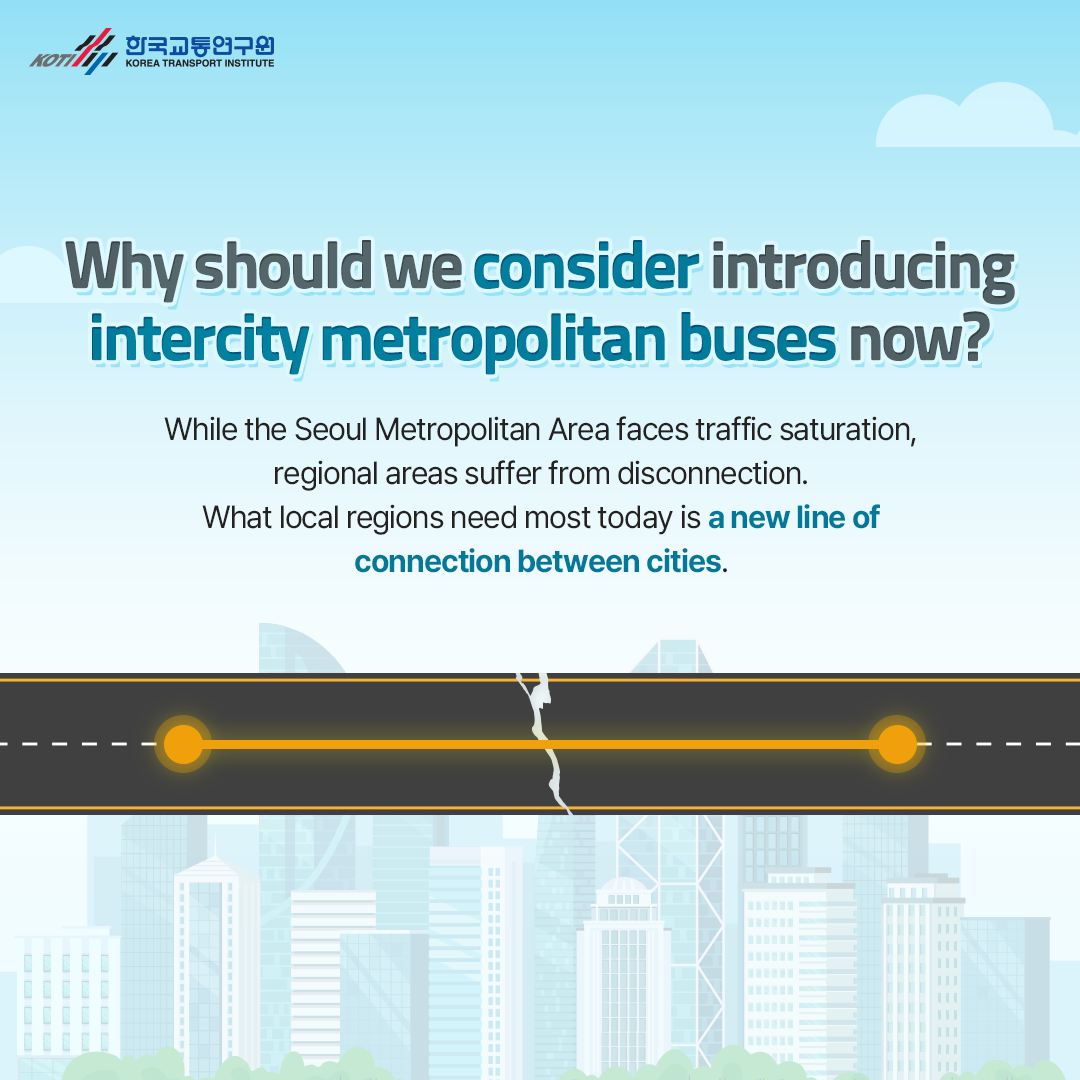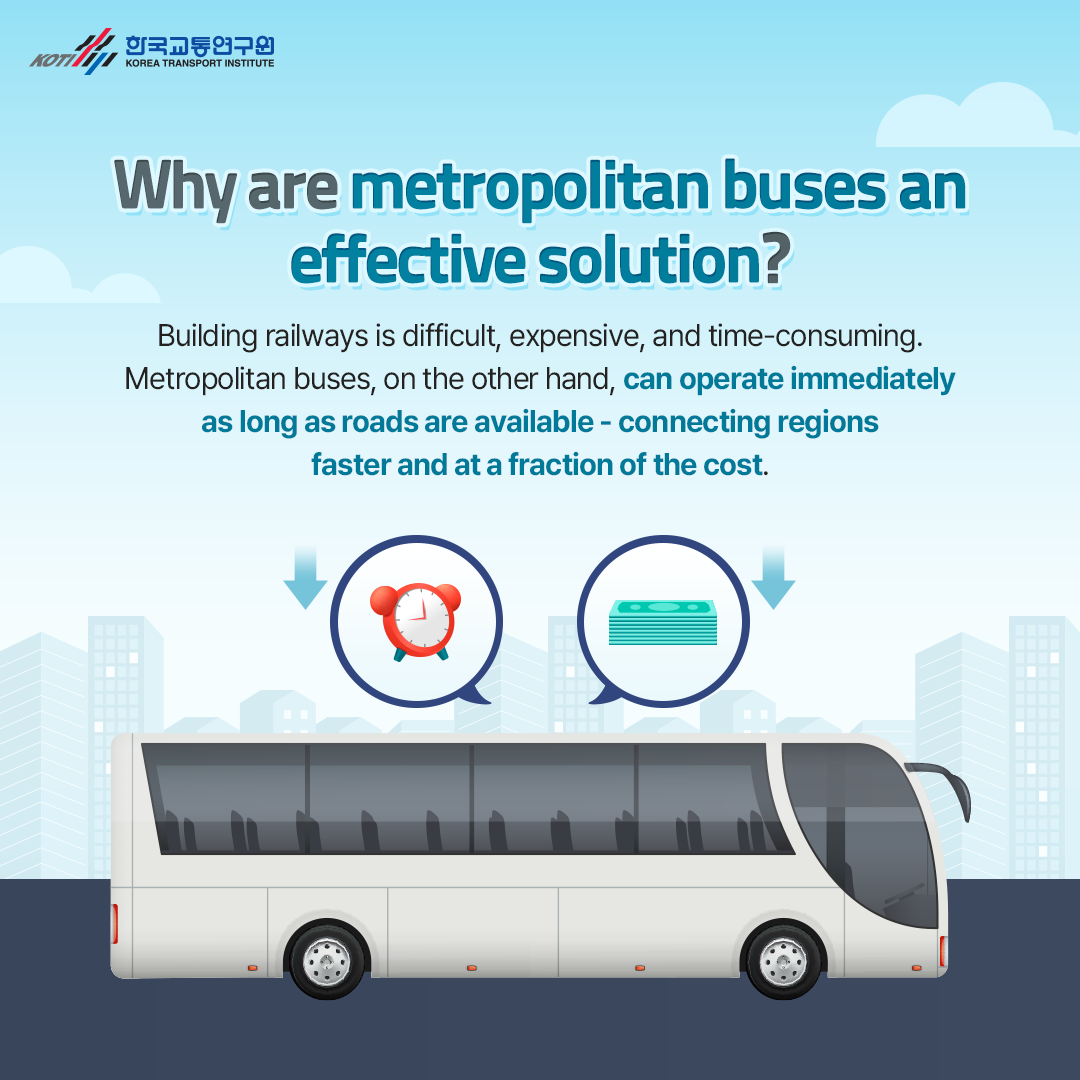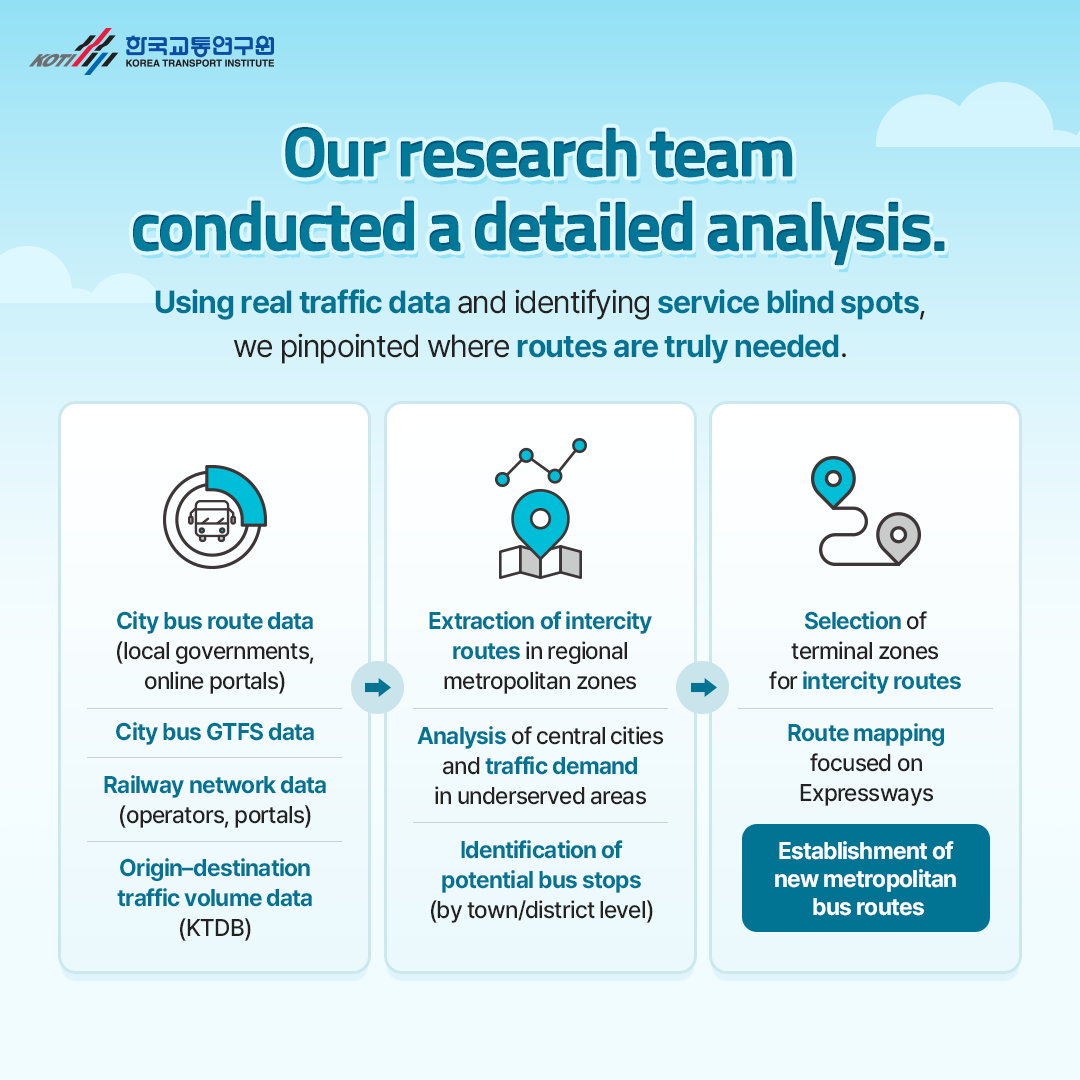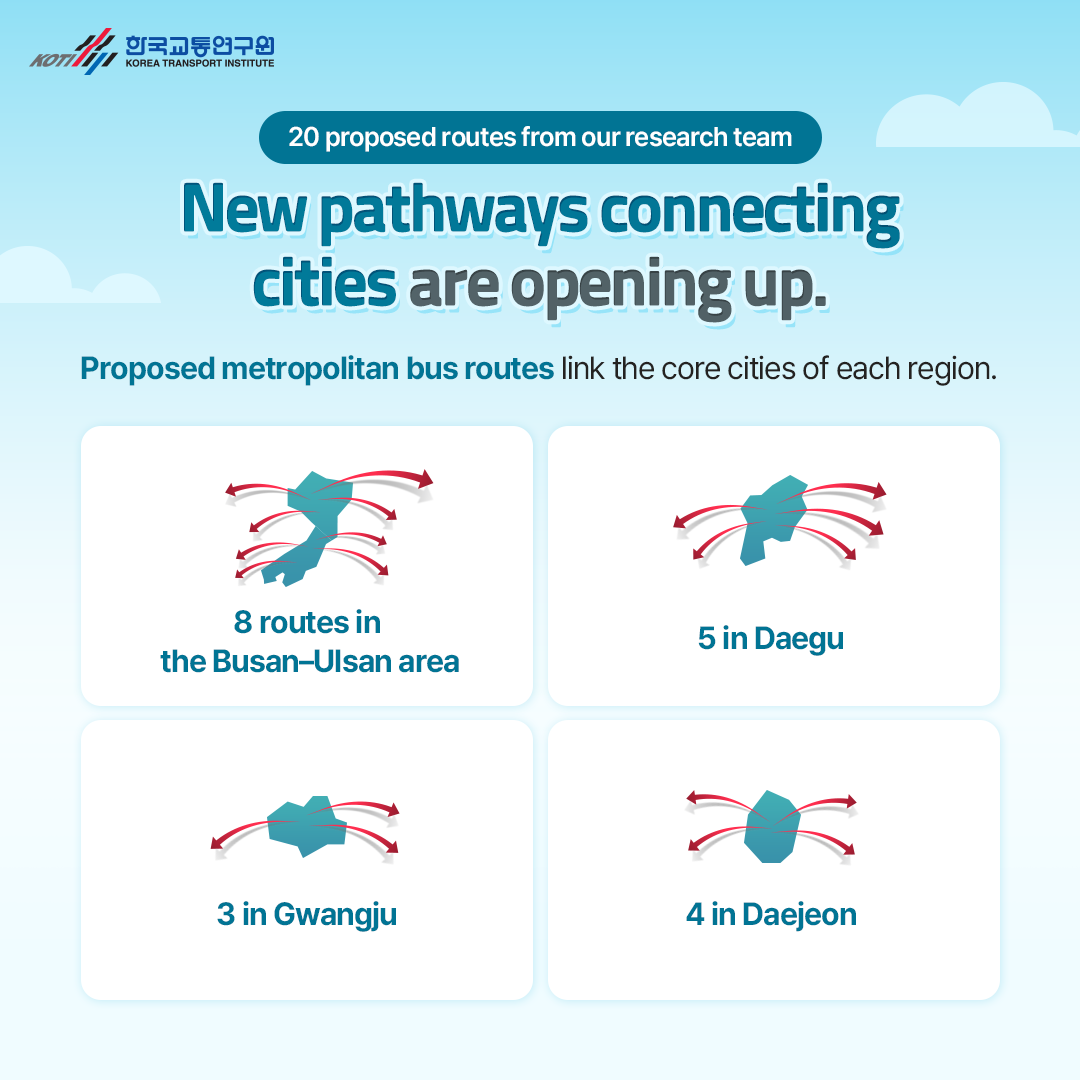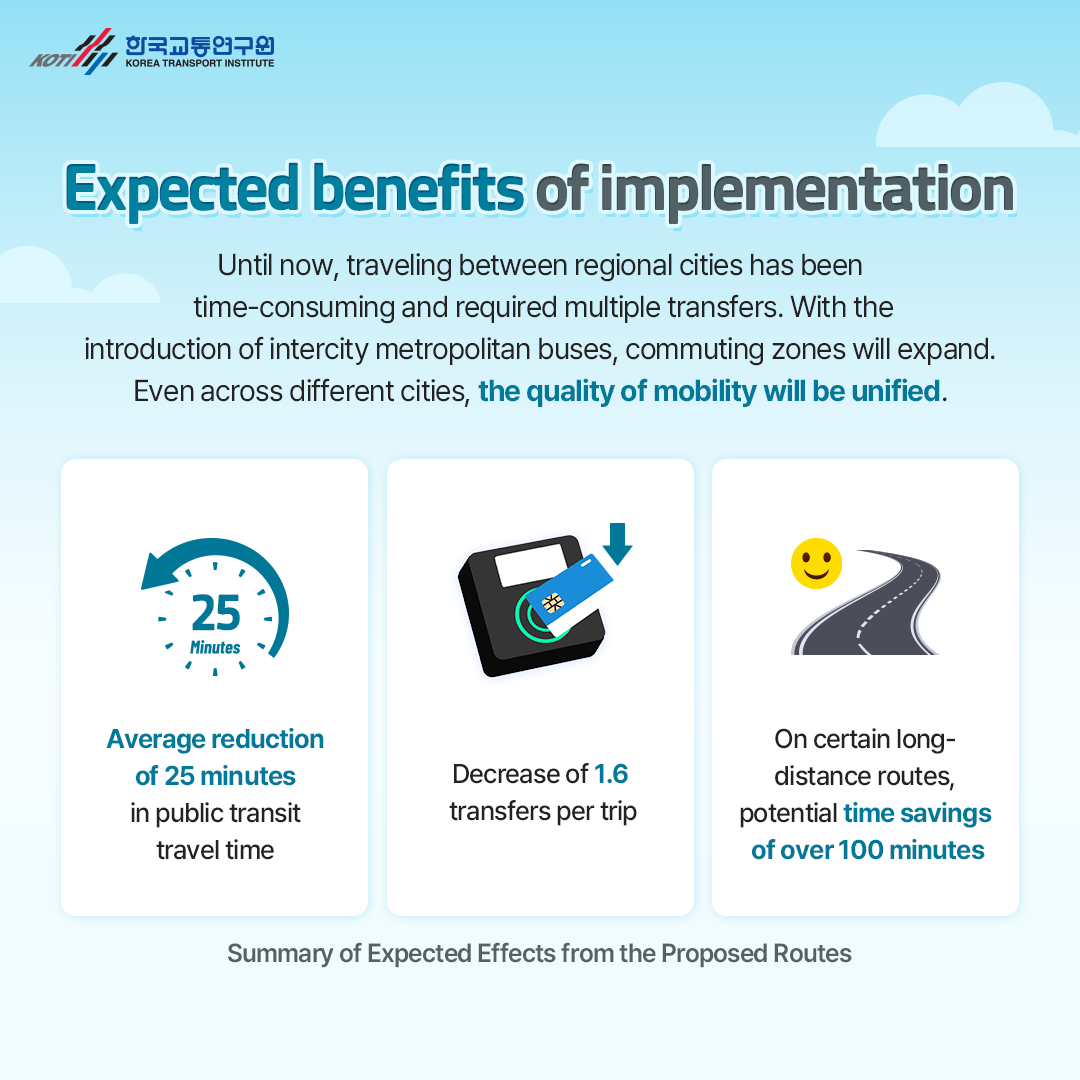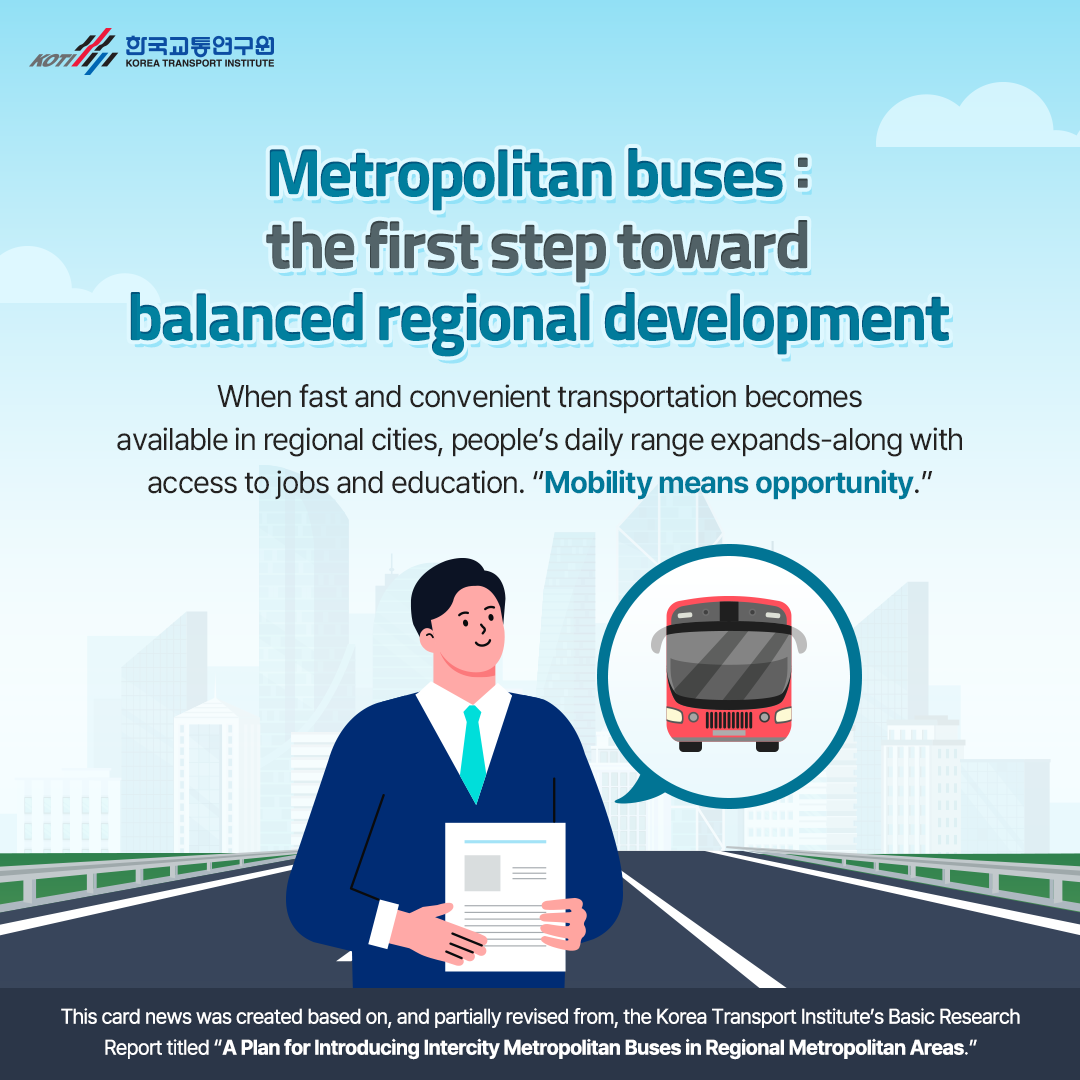Card News

NEWS
KOTI - Korea Transport institute
Feeds and Updates
Introducing Intercity Metropolitan Buses in Regional Hubs: The First Step Toward Balanced Development
October 13 2025
-
Why should we consider introducing intercity metropolitan buses now?
While the Seoul Metropolitan Area faces traffic saturation, regional areas suffer from disconnection.
What local regions need most today is a new line of connection between cities.
Here’s the reality.
95% of all metropolitan buses nationwide are concentrated in the Seoul Metropolitan Area.
Residents in regional metropolitan zones still struggle with limited access to public transportation and rely heavily on private cars.
, , , <310 routes>, <15 routes>
Why are metropolitan buses an effective solution?
Building railways is difficult, expensive, and time-consuming.
Metropolitan buses, on the other hand, can operate immediately as long as roads are available—
connecting regions faster and at a fraction of the cost.
Our research team conducted a detailed analysis.
Using real traffic data and identifying service blind spots, we pinpointed where routes are truly needed.
- City bus route data (local governments, online portals)
- City bus GTFS data
- Railway network data (operators, portals)
- Origin–destination traffic volume data (KTDB)
- Extraction of intercity routes in regional metropolitan zones
- Analysis of central cities and traffic demand in underserved areas
- Identification of potential bus stops (by town/district level)
- Selection of terminal zones for intercity routes
- Route mapping focused on expressways
- Establishment of new metropolitan bus routes
Where are the service blind spots?
All four major metropolitan regions—Busan–Ulsan, Daegu, Gwangju, and Daejeon—have connectivity gaps.
In particular, residents in suburban areas experience the greatest inconvenience.
There are still many places unreachable by bus.
20 proposed routes from our research team
New pathways connecting cities are opening up.
Proposed metropolitan bus routes link the core cities of each region:
8 routes in the Busan–Ulsan area, 5 in Daegu, 3 in Gwangju, and 4 in Daejeon.
Expected benefits of implementation
Until now, traveling between regional cities has been time-consuming and required multiple transfers.
With the introduction of intercity metropolitan buses, commuting zones will expand.
Even across different cities, the quality of mobility will be unified.- Average reduction of 25 minutes in public transit travel time
- Decrease of 1.6 transfers per trip
- On certain long-distance routes, potential time savings of over 100 minutes
However, there are practical challenges.
- Financial burdens on local governments
- Institutional limitations regarding licensing, permits, and cost-sharing
- Coordination issues with existing intercity bus operators
The key lies in cooperation and institutional reform.
We must build partnerships, improve regulations, and ensure collaboration between the central and local governments.- Support for the transition of existing intercity bus operators
- Improvement of operator selection systems
- Establishment of a national–local co-financing and governance framework
Metropolitan buses: the first step toward balanced regional development
When fast and convenient transportation becomes available in regional cities, people’s daily range expands—along with access to jobs and education.
“Mobility means opportunity.”
* This card news was created based on, and partially revised from, the Korea Transport Institute’s Basic Research Report titled “A Plan for Introducing Intercity Metropolitan Buses in Regional Metropolitan Areas.”

